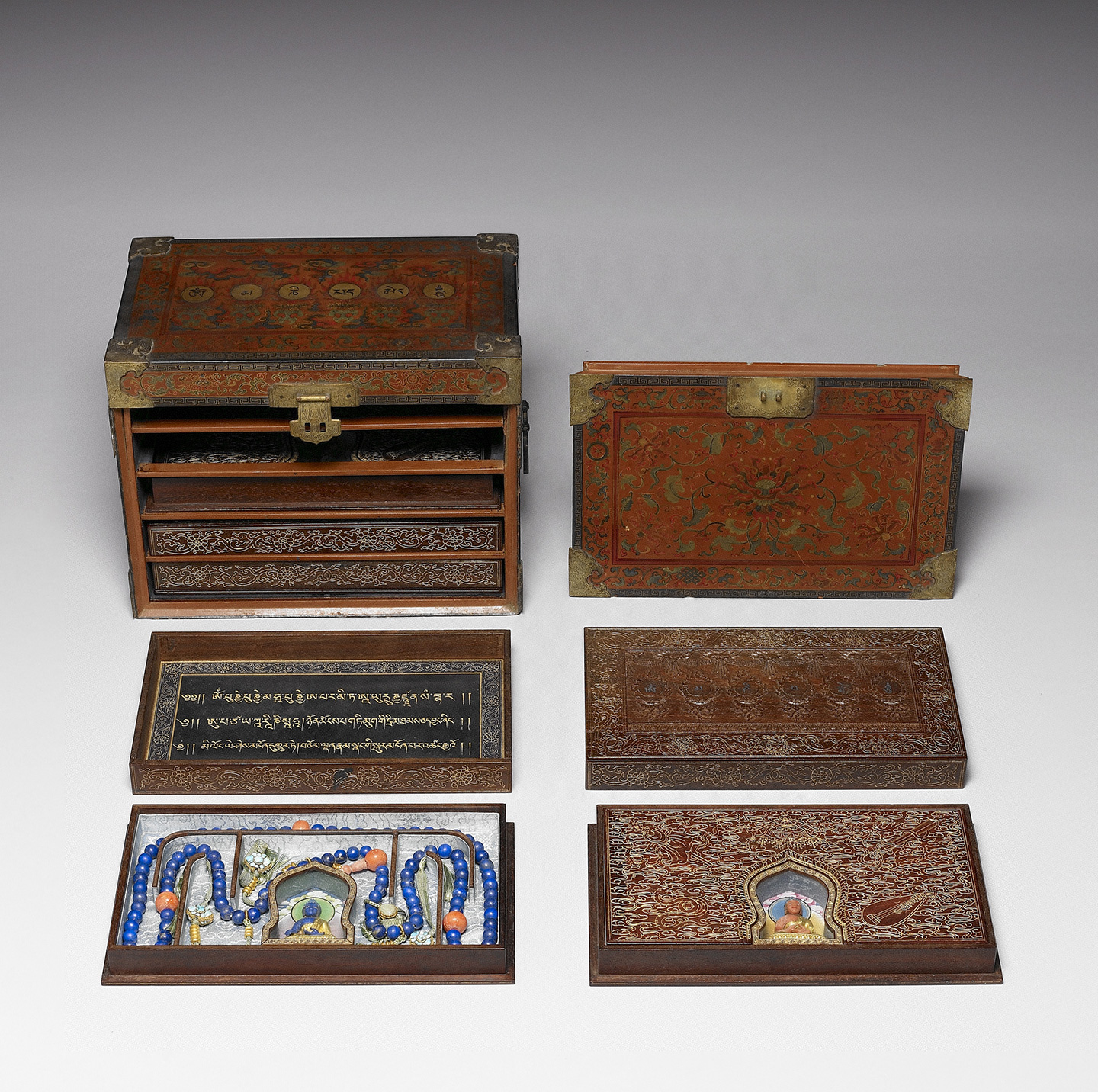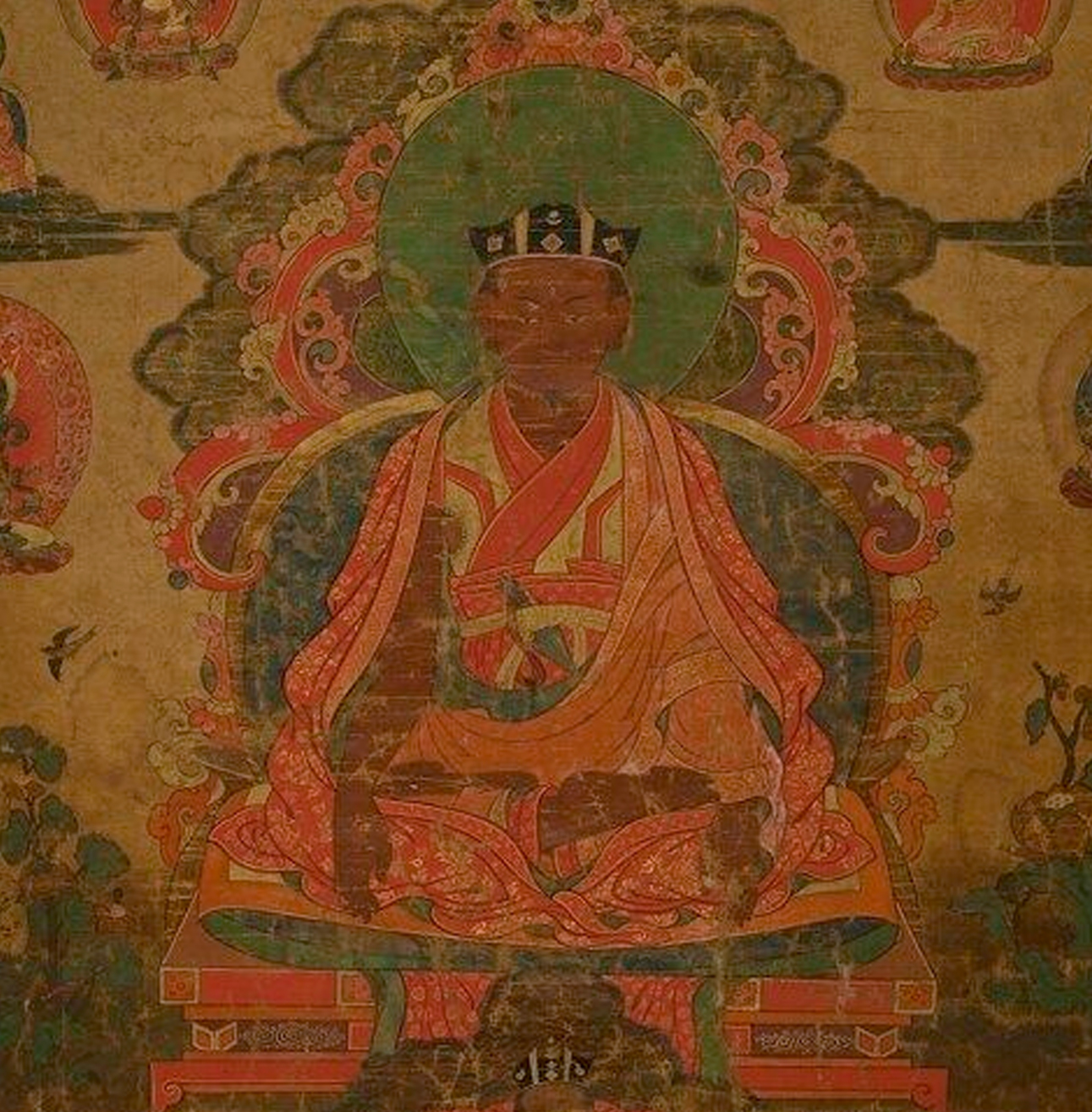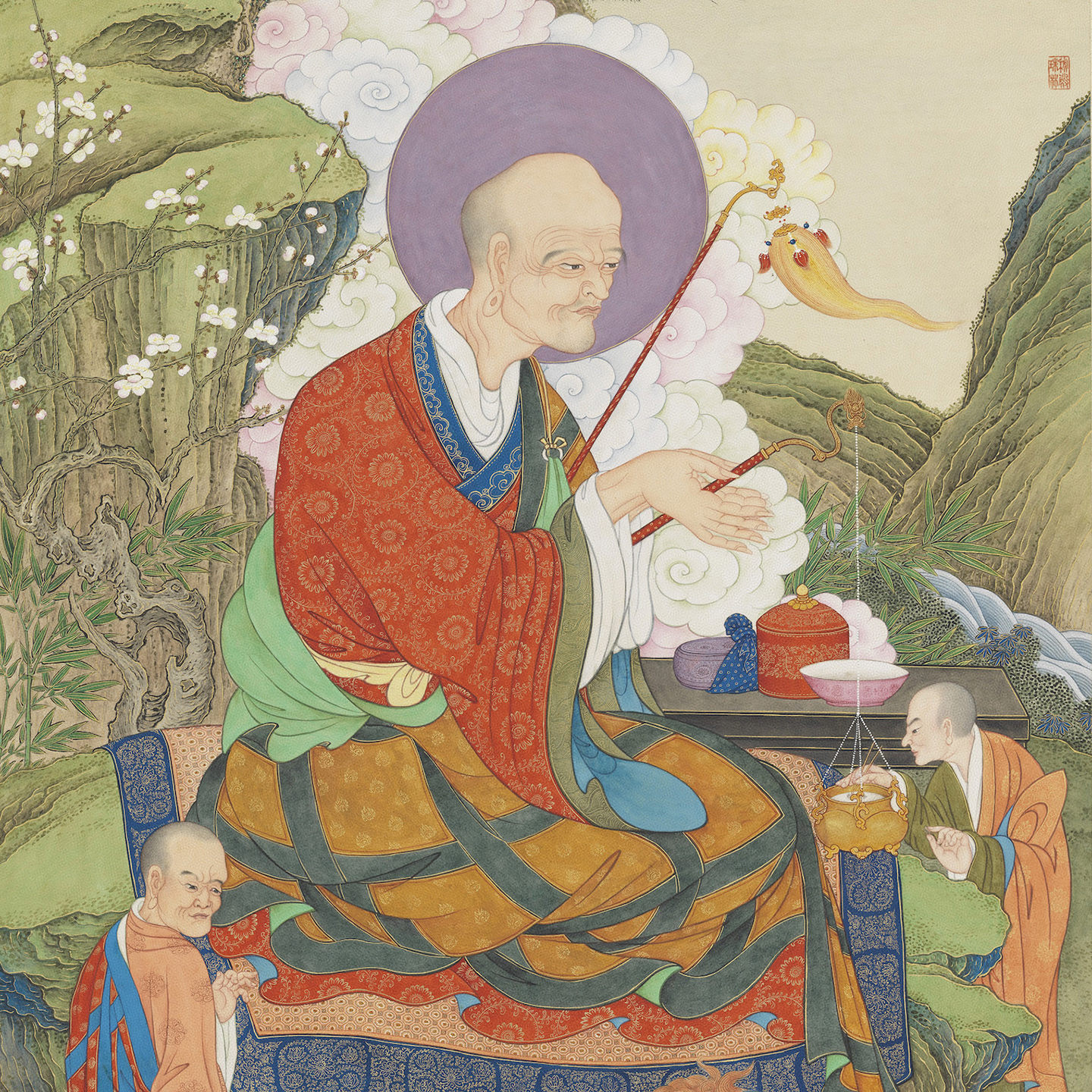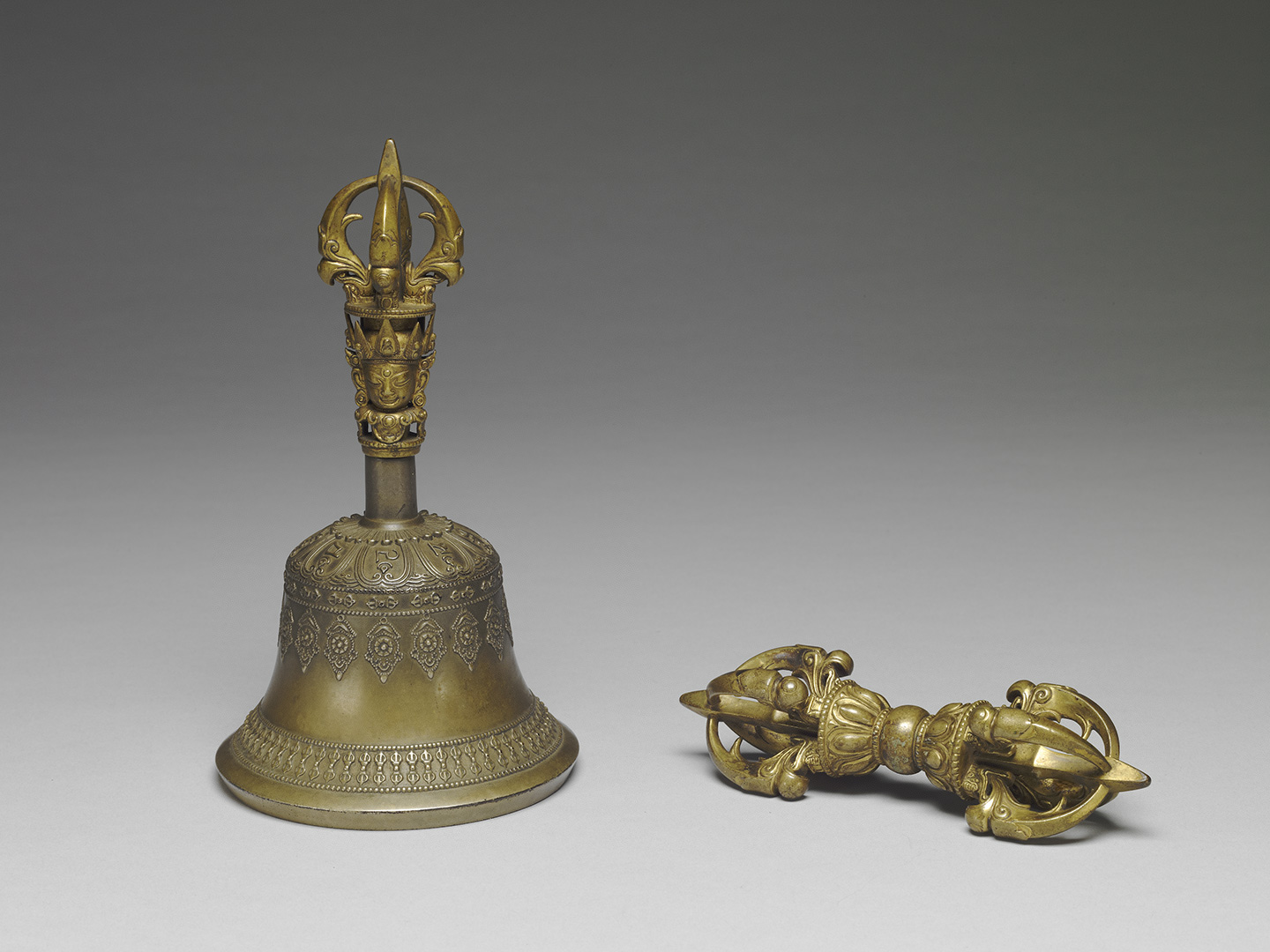Buddhist images are the objects of worship and visualization. A total of 756 Tibetan Buddhist deities are painted on the front and back cover planks of the Kangxi Kangyur. All the paintings were rendered in accordance with the proportion, color, and style stipulated in the Zaoxiang Liangdujing (Sūtra of the Scale of Making Buddhist Statues). It is a supreme treasure of Tibetan Buddhist deities. These sacred images can be categorized into five groups: buddhas, bodhisattvas, dharma protectors, great masters, and arhats. Among them dharma protectors account for roughly 50% and female deities 25%. Be they peaceful deities or wrathful ones, they are the manifestation of skillful means to lead sentient beings to enlightenment. It is a distinctive characteristic of Tibetan Buddhism. This section shows the deity images on cover planks, gold and bronze statues, color-painted scrolls, and all the dharma instruments held by the deities, demonstrating the uniqueness of Tibetan Buddhist deities.
Five Families of Buddha
- Five-colored rosary and Five Families of Buddha
- Qing dynasty, 18th century
Representing the five wisdoms, it is also dubbed the "Five Tathāgatas of Wisdom," or "Five Families of Jina." In Tibetan Buddhism, a practitioner should rely on not only recitation of mantras and visualization of maṇḍalas but also the attainment of five wisdoms to become a Buddha in this life. It is believed that only the Mahāvairocana (Vairocana) Tathāgata, who is the dharmakāya form of Buddha Śākyamuni, possesses the five wisdoms. To educate the sentient beings, Vairocana embodies five buddhas: Vairocana Buddha (center) in white color, representing the wisdom of the essence of dharma-realm; Akṣobhya Buddha (east) in blue color, standing for the mirror-like wisdom; Ratnasambhava Buddha (south) in yellow color, representing the wisdom of equality; Amitābha Buddha (west) in red color, representing the wisdom of wonderful observation; and Amoghasiddhi Buddha (north) in green color, representing the wisdom of achievement. This set of the Five Families of Buddha and rosary, which are made of lapis lazuli, amber, coral, and turquoise are currently housed in a four- drawer cabinet. Each drawer is sealed with glass, which is covered by a plate decorated with engraved and gilt stripes. On the drawer plate there is a niche-shaped opening. Inside the drawer cover is the mantra written in gold ink on black lacquer. The artifact was made in 18th century by the Qing court.
The 2nd Karmapa Karma Pakshi
- Tibetan tangka, 17th Century
The Kagyu School began around the 11th century. It emphasized the teachings of tantricism. However, the learning of tantricism needs oral transmission, so the Tibetan term Kagyu (literally means oral transmission in Tibetan) emerged. Because the founder of the School, being a layman, always wore white skirt, it is also translated as the White School (white is called dkar in Tibetan). It is the first school in Tibetan Buddhism to adopt the reincarnation system. This tangka, produced around in 17th century, belongs to the Karma Kagyu School. It describes the second patriarch of the School - the second Karmapa Karma Pakshi (1204-1283) and his related lineage. Karma Pakshi was invited to visit Mongol, and was received by the royal family. In 1256, the Mongol Mönkh Khan bestowed upon him a golden rim black monk hat and a gold seal. Since then, his reincarnation line had been called the Black Hat lineage. The whole tangka features delicate drawing and elegant color, a typical eastern Tibetan painting style influenced by Han Chinese culture.
The First Arhat Aṅgada
- Yao Wenhan, Qing dynasty
On the gorgeous Mt. Kailash lived Arhat Aṅgada, holding an incense burner and a scented fly whisk, with other 1,300 arhat attendants accompanying him. Arhat Aṅgada ranks first among the sixteen Tibetan arhats. By the order of Buddha Śākyamuni, he lived on a snowy mountain. In the painting, his head is covered by a halo. He wears the Han-style loose robe, tilting his body on a stone seat. His left arm folds a scented fly whisk, and two hands hold an incense burner. It is said that when the followers smell the incense, they can obtain the fragrant sweetness of precept observation; when they touch the scented fly whisk, they can eliminate affliction and illness. There are monks waiting on both sides of the Arhat. Two lions crawl under his feet. In the halo is the Nāgarāja Buddha with eight snakes spiraling behind the bun of the Buddha's crown. The Nāgarāja Buddha, the objects that Arhat Aṅgada holds, and the monk's upturning robe are all rendered in the Tibetan painting style. (Department of Painting and Calligraphy)
Gha a and vajra
- Tibet, 15th century
The gha a (དྲིལ་བུ།) and the vajra (རྡོ་རྗེ།) are two commonly used ritual implements in Tibetan Buddhism. In Tantric practice, the two are often inseparable, with the right hand (the "method" hand) holding the vajra and the left (the "wisdom" hand) holding the gha aTogether, they represent the union of the forces of compassion and wisdom. The gha a, or bell, is hollow, symbolizing emptiness, while the bell's ringing sound represents the meaning. The vajra has five prongs on both sides, symbolizing the Five Wisdoms (Tathatā-jñāna, Ādarśa-jñāna, Samatā-jñāna, Pratyavekṣaṇa-jñāna, and Kṛty-anuṣṭhāna-jñāna). This set of gha a and vajra is housed in a leather box with lacquered decorations, and the description therein indicates that the set, made during Karmapa's time, was worshipped in the Potala Palace in Tibet and was once owned by the second, the third, and the fifth Dalai Lamas.




